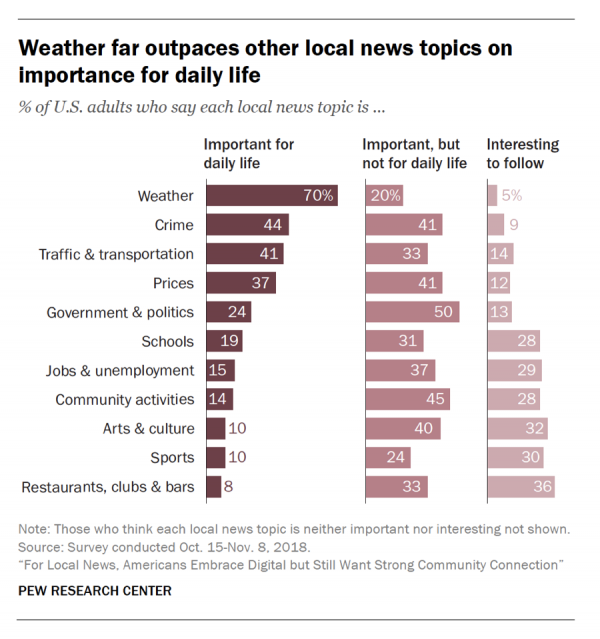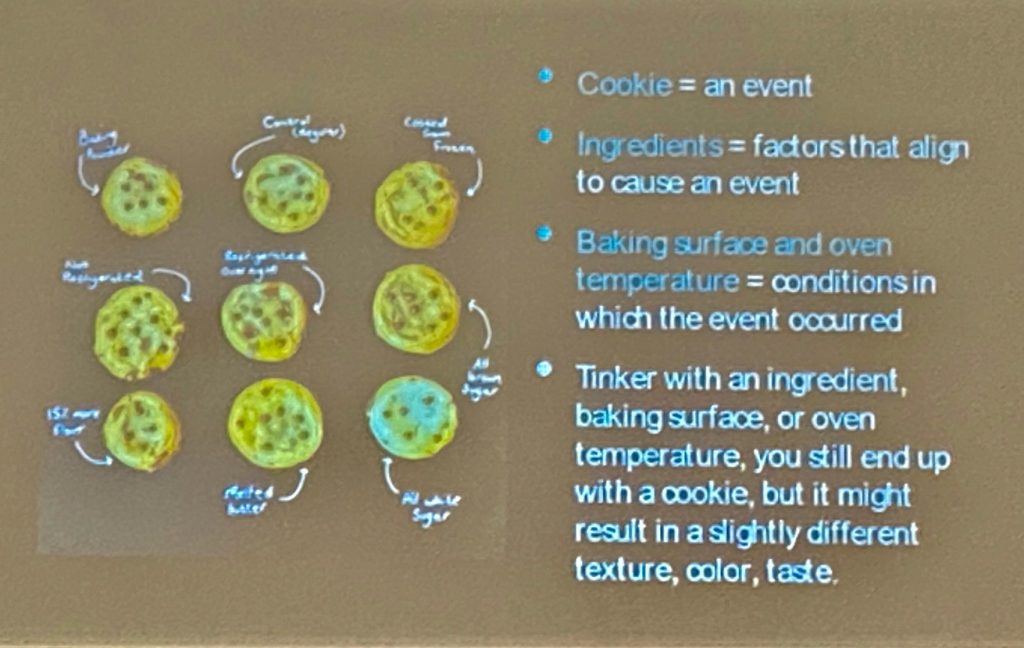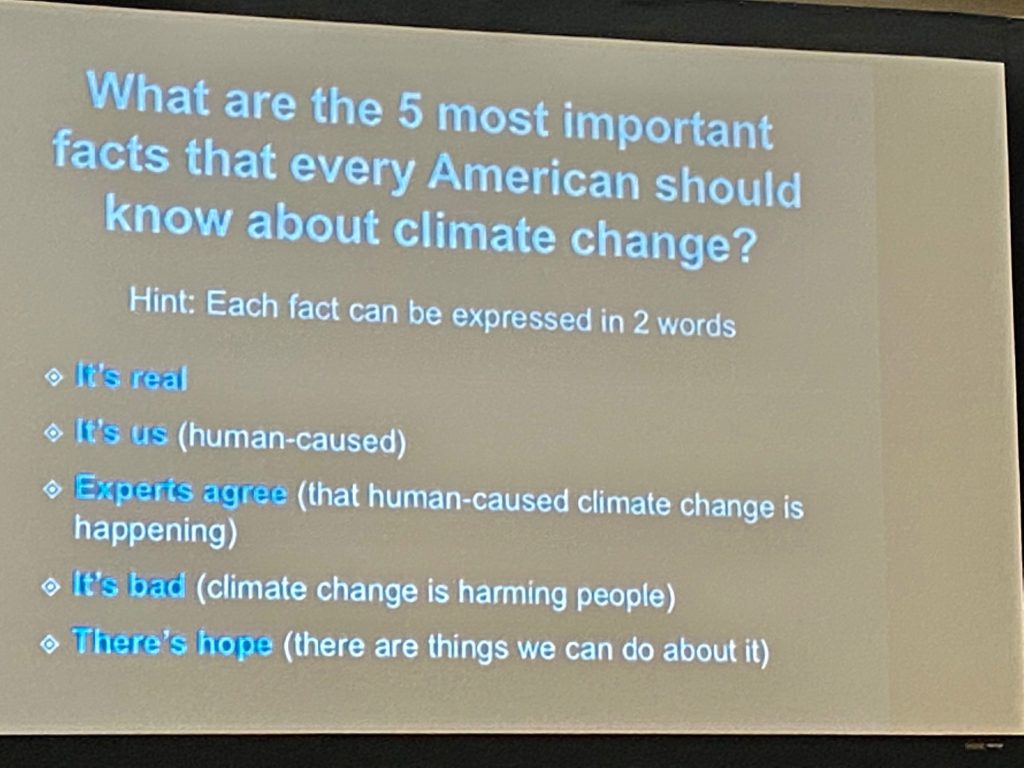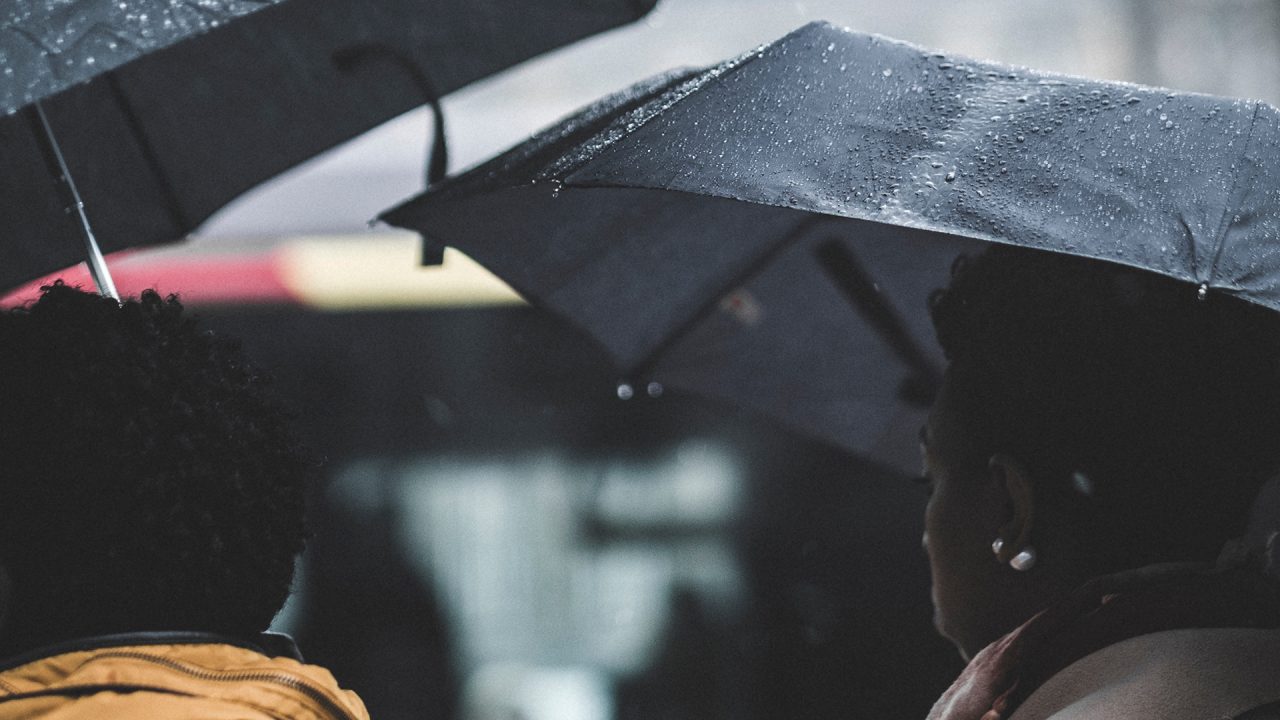“How can I be better than a weather app?” Rob Carlmark, meteorologist at KXTV in Sacramento, told me a few years ago that he asked himself this question each day as he prepared his forecast. Carlmark was prescient. Now that the current temperatures, highs and lows, and five-day forecast are always just one smartphone finger-tap away, local meteorologists and their news managers must earnestly ask: What is the future of local weather on local news?
I got the chance to hear the current best thinking on that question at the 100th annual conference of the American Meteorological Society (AMS), including an all-day track dedicated to the present and future of broadcast meteorology. The key takeaways are relevant not only for TV forecasters but also for broadcast news leaders charged with forecasting the future of their weather coverage. Spoiler alert: the future of local weather is inseparable from climate coverage. Here’s why.
The Local Forecast is No Longer Enough
The data doesn’t lie. As local TV news viewership has slowly but steadily declined, the local weather segment has endured as the most ‘must-see’ aspect of many local newscasts. Research by media consultants and by Pew Research shows that local weather is the most valued topic covered by local newscasts.

It might be tempting to stop right there. Thanks for watching, goodnight. But it would be perilous to take this narrow view. Zooming out reveals that audiences are increasingly able to meet their local forecast needs via always-on digital devices, without waiting for the 5 p.m. news. For example, weather and news searches now consistently rank among the top three uses of voice assistants like Alexa; and a Pew study found that weather was the top use of local news apps as far back as 2011. The same 2018 Pew study that put weather as the top reason to tune in to local TV news also revealed that consumers said weather was the easiest type of local information for them to find. Audiences have many more choices now for what has become commoditized forecast information.
Think about how traffic apps have carved away the audience that formerly watched local TV traffic reports. The better, always-on, personalized and portable solution is carving away this local TV franchise. For those attending the all-day broadcast track at AMS100, the message was clear: Daily weather forecasting remains necessary. But it is no longer sufficient as the sole basis for owning the local weather brand. The corollary: don’t be confused by the enduring popularity of live breaking weather coverage’; it’s local breaking news… about weather.
Rob Carlmark was right. The disruptors are coming. We have to offer more than an app. At AMS 100, the consensus was that the future of local broadcast weather is intertwined with owning the local story of climate change. Here are seven lessons from AMS 100 about how to make that happen.

Maybe it was the school of fish swimming in the flooded garage, or maybe it was the octopus. It was November of 2016 and a king tide was again inundating Jeff Berardelli’s neighborhood in South Florida.
The long-time local TV meteorologist described the experience to his peers at AMS100 as a kind of tipping point moment for him. He committed to reinvent himself to focus on climate, even if it meant leaving his comfortable forecasting job. He went back to school to increase his expertise and volunteered to do extra reporting focused exclusively on climate.
The gamble paid off. Less than three years later, he was hired at CBS News in New York, where he is now both a meteorologist and the network’s first titled Climate Specialist. Berardelli is the prototype of the future of broadcast meteorology. He did it, as he put it, by taking on “the beat of the future.”

In some newsrooms there’s been a historic perception that climate stories were “ratings killers.” As recently as 2019, an Axios article repeated the trope, citing MSNBC anchor Chris Hayes as its source.
Data scientists at Chartbeat put those assumptions to the test, measuring the amount of climate content published and the time audiences spent with that content in the first quarter of each year from 2017 to 2019. In their research and in collaboration with Columbia Journalism Review, they came to a clear conclusion: Climate coverage has increased dramatically in the past two years, and audience engagement has grown even more.
Specifically, Chartbeat data scientist Su Hang reported that the “number of articles written on climate change have increased 56% over the past year…however, we’re seeing that audiences are paying 80% more attention to climate change content this year.” Hang concludes: “There’s an appetite for this content – the demand is outweighing the supply.”

At the meteorology conference, several forecasters voiced concerns about the politics of climate and their fears about tackling the topic in markets with more conservative viewers.
Who better than “South Carolina’s weatherman” to turn to for the answer? Jim Gandy may have retired in 2019 from WLTX, but the longtime meteorologist is rightly recognized (including in this profile in the New York Times back in 2014) as a pioneer in incorporating climate reporting into local weather. In fact, he was the first local forecaster to partner with Climate Matters, the educational arm of the nonpartisan, nonprofit Climate Central, which now collaborates with more than 800 meteorologists on climate reporting.
Gandy’s advice is simple: “Talk about where they live.” Gandy ticked off the topics that mattered to his viewers in the Carolinas — sweltering heat, allergies, poison ivy intolerance — and how each is connected to climate change. One topic transcended all others: How climate change impacts gardening. Gandy noted that TV research consistently showed gardening was the number two topic of interest for his viewers.
Gandy said his viewers “do care about how it (climate) affects them in their community,” adding: “Focus on the science and everything else will take care of itself.”
Here’s a great example of telling the story of climate through the direct experiences of local viewers, created by WBZ Boston Meteorologist Eric Fisher.
ICYMI: A look at our ‘biological markers’ piece from last night. Had to re-track a line…so those who asked if they could show in their classrooms, etc…please use this version! #wbz pic.twitter.com/Zt1o3EEcH8
— Eric Fisher (@ericfisher) January 21, 2020

When a community experiences a big weather event, it’s newsworthy. But not all extreme weather events are due to climate change. Unfortunately, fact and fiction spread with equal ease in crowded social media feeds. Meteorologists can help audiences tell the difference. Georgia climatologist J. Marshall Shepherd suggested this analogy: extreme events are like a cookie recipe!

Lots of variables determine what kind of ‘cookies’ (weather events) result! Shepherd urged local meteorologists at the AMS conference to combine their position of audience trust with their knowledge of science to be the grownup in the room: to draw attention to the difference between “weather” and climate”; to distinguish between trends we can confirm — fewer cold spells, more hot spells — and variations in weather (like “more tornadoes”) that are not validated yet in the science as climate-based.

“There are only five things Americans need to know about climate change,” Ed Maibach told the meteorologists gathered at AMS100, adding that each can be expressed in just two words.

Maibach, a professor at George Mason University whose specialty is strategic communication on the topic of climate science, urged meteorologists to use that unique trust relationship with the audience to counter myths and amplify accurate reporting.
Maibach underlined what he identified as the biggest gap between public opinion and the actual science: Only 55% of Americans think “scientists agree” climate change is real, whereas Maibach notes that the actual consensus is 97-99%.
Here’s an example of focusing on the data to tell the story of local climate change in Boston from WBZ’s Eric Fisher.
Part III of our series looking back at the 2010s and how they fit in with the local climate picture.
This one features the numbers at our own @bhobservatory
Cliff notes: The 2010s featured our warmest spring, summer, fall, winter, year, month, etc. #wbz pic.twitter.com/hqJQfNsaEH
— Eric Fisher (@ericfisher) January 22, 2020

A planet-sized story is bigger than just hits in a newscast. Mike Nelson at KMGH in Denver has set the example for taking local climate coverage beyond the boundaries of the 5 p.m. News, finding diverse ways to engage with the community. Nelson has organized a local symposium with climate experts (and – gasp – meteorologists from other local TV stations); he makes visits to schools to talk about climate; he regularly uses Facebook Live to do extended interviews with experts that allow the audience to engage and ask questions. The station has even created a full event experience tied to Earth Day.
Watch: Mike Nelson Facebook Live interview with Climate Scientist
Climate coverage is increasingly moving beyond just the weather team. Cronkite News Lab previously profiled the station-wide climate campaign by WRC (NBC – Washington, DC), led by News Director Mike Goldrick. The campaign wasn’t just good journalism but also drove sponsorships, according to Goldrick.
NBC owned and operated stations are leaning in. At AMS100, hosted in Boston, NBC10 meteorologist Chris Gloninger showcased reporting from “Adjusting to Climate Change,” a series the station hopes will be a destination for “all things climate change” in New England.
Tonight on #AdjustingtoClimateChange at 7PM – once a house floods chronically, its value drops and will never recover. This will eventually have a huge impact on coastal communities whose tax base will suffer. @UCSUSA developed this program to help visualize the losses. 1/ pic.twitter.com/X5lH4WhoB4
— Chris Gloninger NBC10 Boston (@ChrisGNBCBoston) January 30, 2020
Bernadette Placky-Woods of Climate Central shared another example of how reporting on climate can also be good business for broadcasters: Adding a solar forecast, sponsored the same way stations have long had a sponsored pollen forecast.


Localizing the story of climate is easier than ever, in part because of the evidence of increased local impacts. Meteorologists interested in incorporating climate in their weather coverage have a range of free, trustworthy, validated sources they can use.
Audience opinion data from the Yale Climate Opinion Maps can be used to identify and craft hyperlocal story angles based on local sentiment about climate. Chartbeat data provides meteorologists with the evidence to make the case to editorial managers for this kind of reporting. And Climate Central is a nonprofit and nonpartisan online resource for “Climate Matters” that includes free localizable graphic visualizations, an archive of past local climate reporting examples, and a range of story ideas tailored to specific regions.
Here’s an example using Climate Matters resources to localize climate change from meteorologist Jordan Evans here at Cronkite News in Phoenix.
Phoenix on average now experiences 11 fewer winter days that are below normal, compared to 50 years ago. via @ClimateCentral #azwx pic.twitter.com/ztdLK7TPI2
— Jordan Evans (@jordanevanswx) January 22, 2020
“Climate change is a global issue,” notes Bernadette Placky Woods of Climate Matters. “But we see and experience it locally.”
Editor’s Note: Frank Mungeam also spoke at the broadcast track of AMS 100, describing how local meteorologists could apply the “STOP List” (previously published here on Cronkite News Lab) to the weather forecasting workflow to create time for enterprise climate coverage.
Get the Lab Report: The most important stories delivered to your inbox
